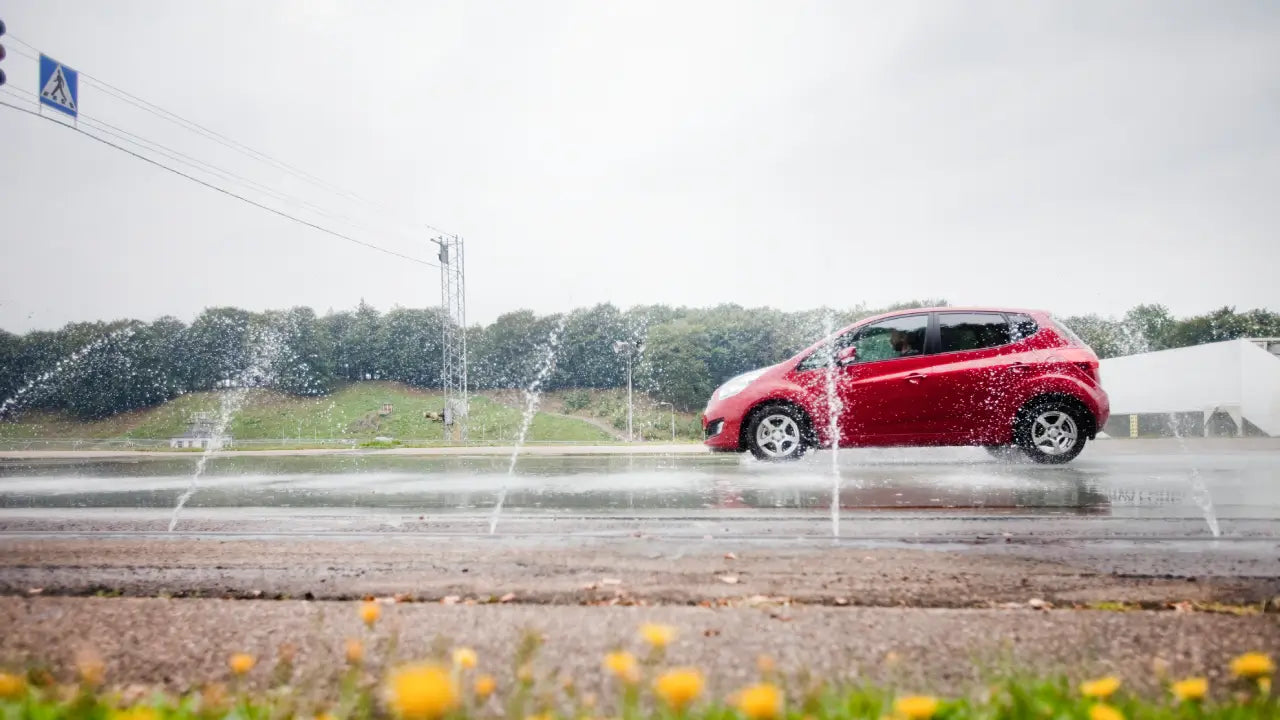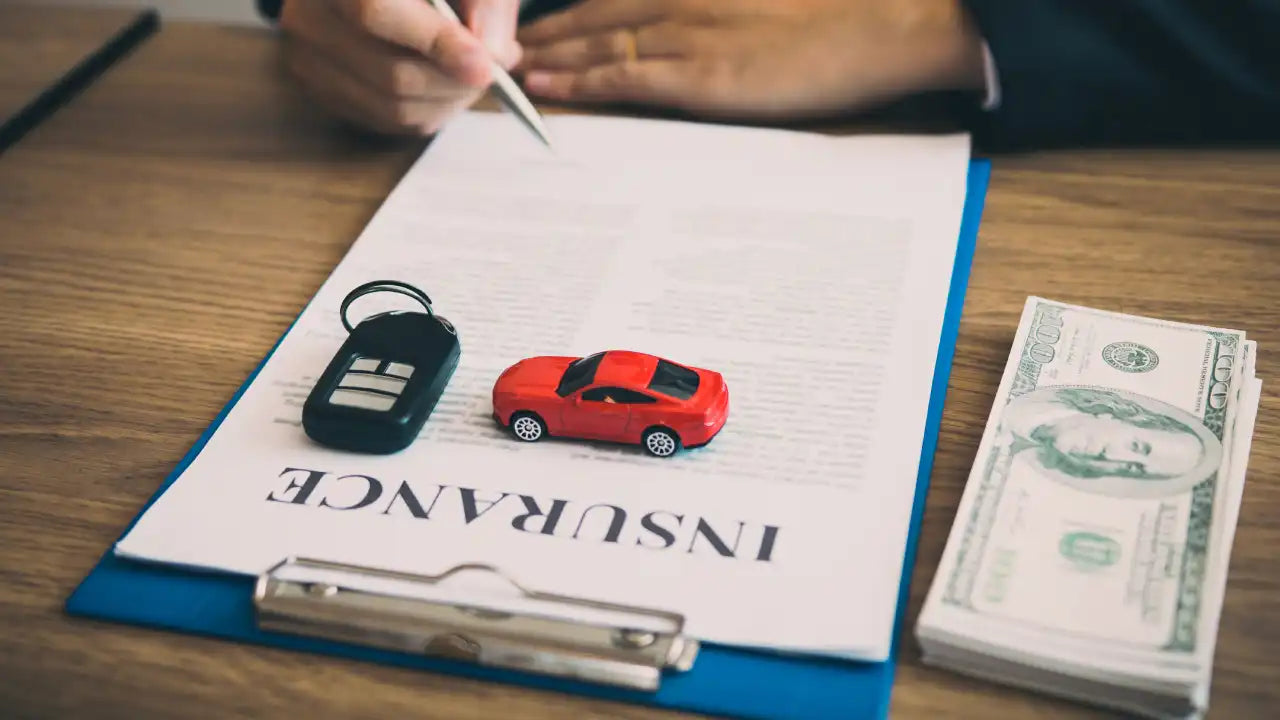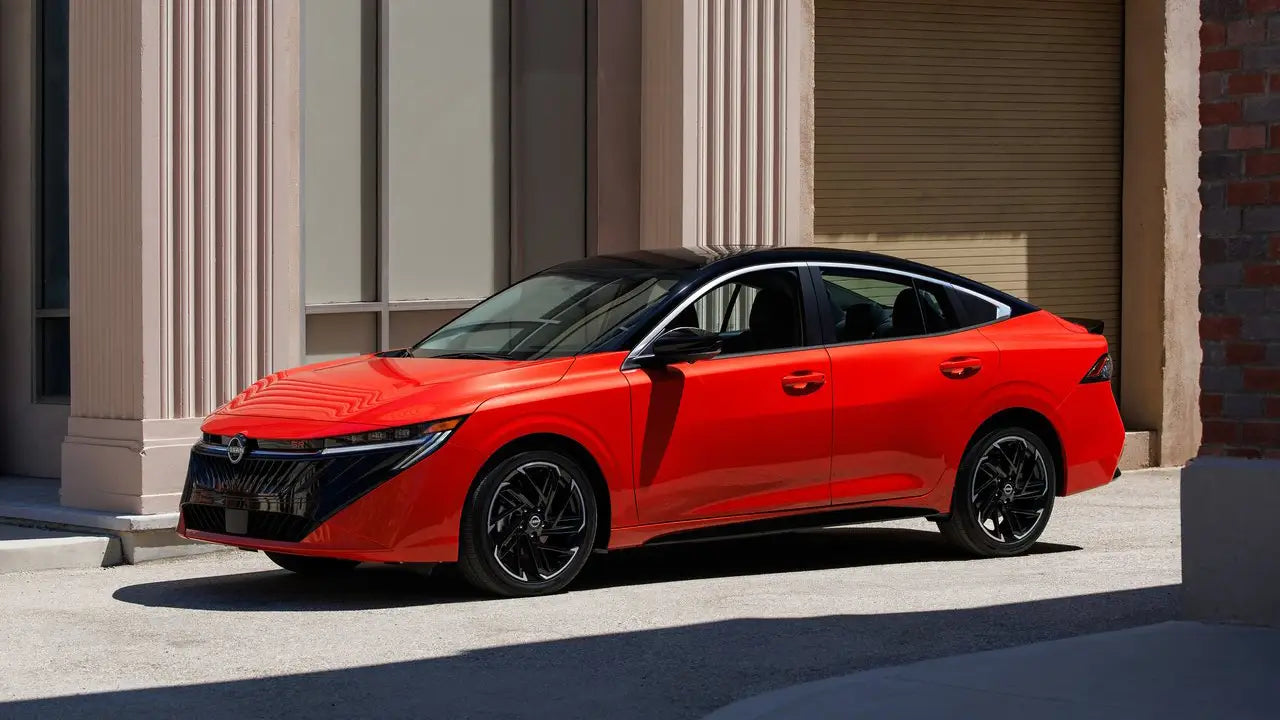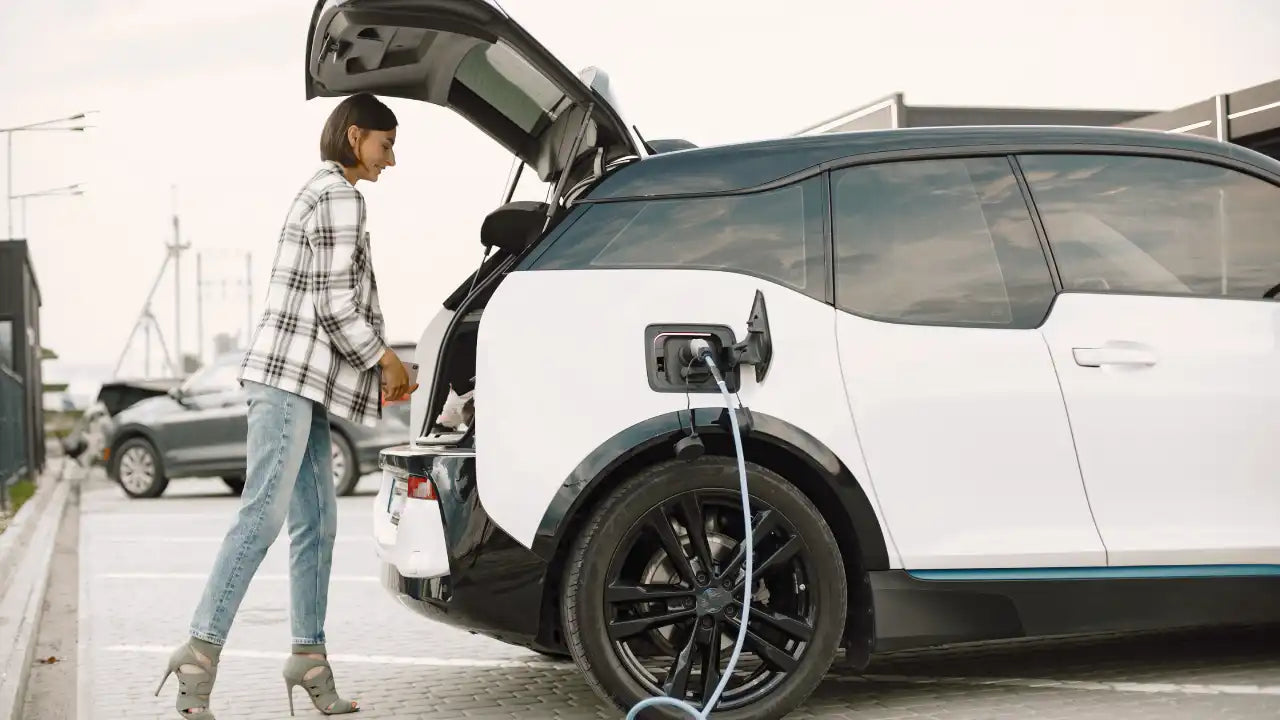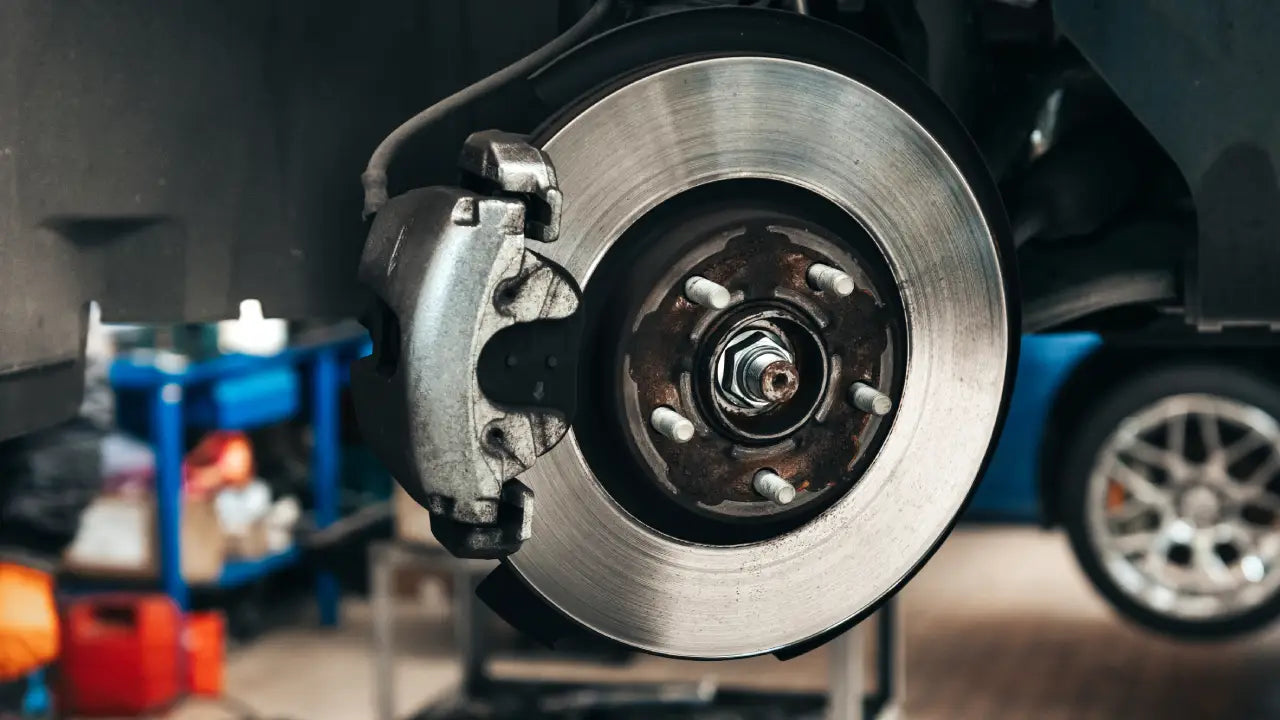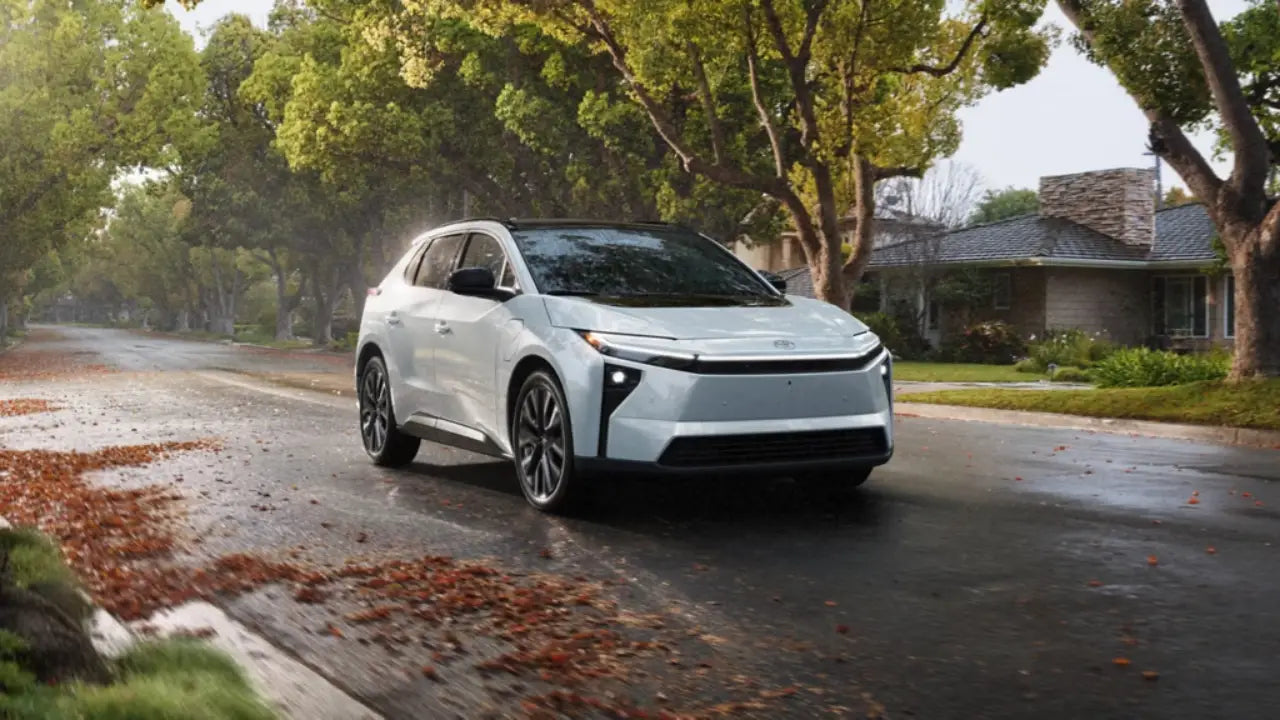El hidroplaneo es un problema serio, pero hay formas de evitarlo. Entender cuándo y cómo ocurre, reconocer las señales de advertencia tempranas y mantener correctamente su coche pueden ayudar a reducir el riesgo. Todo conductor debe estar consciente del hidroplaneo, especialmente cuando llueve o las carreteras están mojadas. En esta guía, Examinaremos más de cerca el hidroplaneo: qué es, por qué sucede, cómo detectarlo y algunos consejos para evitar que ocurra.
¿Qué es el hidroplaneo?
El hidroplaneo, conocido como aquaplaning, ocurre cuando los neumáticos de un vehículo pierden contacto directo con la superficie de la carretera debido a una capa de agua. En tales situaciones, tus neumáticos efectivamente "flotan" sobre la superficie del agua, lo que resulta en una pérdida significativa de tracción, control de dirección y frenado. Incluso conductores experimentados pueden enfrentar riesgos al enfrentarse a carreteras mojadas y condiciones adversas.

Foto por Chalabala en Envato
¿Cuándo ocurre el hidroplaneo?
El hidroplaneo suele ocurrir cuando el agua se acumula más rápido de lo que tus neumáticos pueden expulsarla. Veamos varios casos en los que ocurre el hidroplaneo:
-
Lluvia intensa o agua estancada en autopistas: Los vehículos que se mueven rápido en condiciones de lluvia intensa son particularmente vulnerables.
-
Charcos formados por mal drenaje: Los baches y las carreteras irregulares pueden atrapar agua, haciendo que el hidroplaneo sea más probable.
-
Hojas mojadas o carreteras con aceite: Los desechos orgánicos y el aceite reducen la fricción, facilitando que los neumáticos pierdan tracción.
-
Neumáticos desgastados o con baja presión: La profundidad del dibujo y la presión de los neumáticos son críticas; los dibujos poco profundos y la baja presión reducen la dispersión del agua.
Incluso una pequeña cantidad de agua puede inducir hidroplaneo al conducir a altas velocidades. Cuanto más rápido vayas, mayor es el riesgo.
¿Qué causa el hidroplaneo?
El hidroplaneo ocurre cuando tus neumáticos pierden contacto con la carretera porque el agua se acumula más rápido de lo que tus neumáticos pueden evacuarla. Varios factores clave contribuyen a que un coche hidroplanee:
-
Exceso de agua en la carretera: El agua estancada, los charcos grandes o las carreteras con mal drenaje reducen la fricción entre tus neumáticos y el pavimento. Incluso una capa delgada de agua puede causar hidroplaneo si tu vehículo se mueve lo suficientemente rápido.
-
Alta velocidad: La velocidad es un factor importante. Cuanto más rápido conduzca, menos tiempo tienen sus neumáticos para canalizar el agua. El hidroplaneo puede ocurrir a velocidades tan bajas como 35 mph en aguas profundas e incluso a menor velocidad si sus neumáticos están desgastados.
-
Neumáticos desgastados o con baja presión: Los neumáticos con poca profundidad de dibujo no pueden desplazar el agua eficazmente. Los neumáticos con baja presión tampoco mantienen un contacto óptimo con la carretera, aumentando el riesgo de deslizamiento.
-
Condiciones de la superficie de la carretera: Las carreteras lisas, desgastadas o aceitosas permiten que el agua se acumule y reduzca la tracción. En contraste, las superficies texturizadas o ranuradas ayudan a que los neumáticos agarren la carretera y dispersen el agua.
-
Tipo de vehículo y distribución del peso: Los coches ligeros o vehículos con peso distribuido de manera desigual ejercen menos presión sobre los neumáticos, lo que facilita que pierdan tracción. Los vehículos más grandes son más seguros pero aún pueden hidroplanear si las condiciones son adecuadas.

Photo by den-belitsky on Envato
¿Cuáles son las señales del hidroplaneo?
Si detecta el hidroplaneo temprano, puede reaccionar rápidamente y evitar un accidente. ¿Cómo se siente el hidroplaneo? Veamos las señales del hidroplaneo:
-
Pérdida de control de la dirección: El coche se siente como si estuviera deslizándose o flotando, y las respuestas al volante se sienten menos efectivas o retrasadas.
-
Neumáticos haciendo un sonido de chapoteo o salpicaduras: Puede escuchar el agua moviéndose rápidamente bajo los neumáticos mientras pierden contacto con la carretera.
-
Falta repentina de respuesta de frenado: Sus frenos pueden sentirse menos sensibles, especialmente si los presiona bruscamente.
-
Desviación o deslizamiento inesperado del vehículo: El coche puede desviarse hacia un lado sin que usted gire el volante o deslizarse hacia adelante a pesar de girar el volante.
-
Sensación de flotación: Puede sentir que su vehículo se eleva ligeramente del pavimento, casi como si deslizara sobre el agua.
-
Indicadores visuales: El agua superficial o los charcos en la carretera, combinados con lluvia intensa, aumentan el riesgo de hidroplaneo.

Foto por wirestock en Envato
¿Qué hacer cuando hay hidroplaneo?
Si tu vehículo comienza a hidroplanear, mantener la calma y reaccionar correctamente es crucial. Esto es lo que debes hacer:
-
Mantén la calma y evita el pánico: Los movimientos bruscos pueden empeorar la situación. Mantén un agarre firme y constante en el volante.
-
Suelta el acelerador con suavidad: Levanta gradualmente el pie del pedal del acelerador para reducir la velocidad. No frenes de golpe.
-
Gira suavemente: Mantén el volante apuntando en la dirección que quieres ir. Evita giros bruscos o repentinos.
-
Evita frenar bruscamente: Frenar de repente puede bloquear las ruedas (en vehículos sin ABS) o reducir aún más el control. Si es necesario frenar, aplica una presión ligera y constante.
-
Espera a que vuelva la tracción: Una vez que tus neumáticos vuelvan a conectar con la carretera, sentirás que el coche responde a tu dirección nuevamente. Solo entonces debes acelerar o frenar normalmente.
-
Usa el ABS correctamente (si está equipado): Si tu vehículo tiene frenos antibloqueo y debes frenar, presiona firmemente y deja que el sistema haga el trabajo; pulsará automáticamente para evitar el bloqueo de las ruedas.
Cómo evitar el hidroplaneo
Aunque no puedes controlar el clima, sí puedes controlar cómo te preparas y conduces en condiciones de humedad. Veamos algunas de las mejores formas de reducir el riesgo de hidroplaneo:
-
Reduce la velocidad en clima húmedo: Reducir la velocidad da a tus neumáticos más tiempo para dispersar el agua y mantener la tracción. Cuanto más rápido vayas, mayor es el riesgo.
-
Evita movimientos bruscos: Una dirección, frenado y aceleración suaves ayudan a mantener tus neumáticos estables en superficies resbaladizas.
-
Revisa la presión de los neumáticos regularmente: Los neumáticos con presión baja o alta no agarran la carretera tan eficazmente. Siempre mantenlos en los niveles recomendados por el fabricante.
-
Reemplaza los neumáticos desgastados: La profundidad adecuada del dibujo es crucial para canalizar el agua. Los neumáticos con dibujo desgastado tienen mucha más probabilidad de hidroplaneo.
-
No uses control de crucero bajo lluvia intensa: Necesitas control total para ajustar la velocidad rápidamente cuando las condiciones cambian.
-
Conduce en las huellas de otros vehículos: El coche delante de ti despeja algo de agua, reduciendo la cantidad que tus neumáticos tienen que desplazar.
-
Evita charcos y agua estancada: Si es posible, esquívalos con seguridad. Incluso el agua poco profunda puede causar pérdida de tracción a altas velocidades.
-
Permanece en los carriles centrales cuando sea posible: Las autopistas tienden a inclinarse hacia los bordes, causando que el agua se acumule en los carriles exteriores.
-
Mantén tu parabrisas limpio: Una buena visibilidad te ayuda a detectar peligros de agua temprano y ajustar tu conducción.
-
Frena y acelera gradualmente: Las entradas bruscas pueden hacer que tus neumáticos pierdan agarre más rápido.

Foto por duallogic en Envato
Escenarios Comunes de Accidentes por Hidroplaneo
Los accidentes por hidroplaneo suelen ocurrir de forma repentina, generalmente cuando los conductores menos lo esperan. Las autopistas durante lluvias intensas son una de las zonas de peligro más comunes porque las altas velocidades combinadas con grandes cantidades de agua estancada facilitan la pérdida de tracción. Las curvas cerradas y las rampas de salida también presentan riesgos, ya que los conductores pueden tomarlas demasiado rápido sin darse cuenta de lo resbaladiza que se ha vuelto la superficie.
Las intersecciones con mal drenaje son otro problema común, con charcos que se acumulan cerca de semáforos y pasos peatonales, causando que los vehículos resbalen al arrancar o detenerse. Las plataformas de puentes y pasos elevados presentan riesgos significativos ya que se enfrían más rápido que las carreteras convencionales y se vuelven más resbaladizas rápidamente. Además, las carreteras impregnadas de aceite o con hojas caídas ofrecen una superficie resbaladiza, aumentando el riesgo de hidroplaneo.
¿Cuáles son los Vehículos Propensos al Hidroplaneo?
Aunque cualquier vehículo puede hidroplanear, algunos son más vulnerables que otros. Aquí están los vehículos propensos al hidroplaneo:
-
Vehículos ligeros: Menor peso significa menos presión hacia abajo, reduciendo el agarre del neumático.
-
Vehículos con neumáticos desgastados o lisos: La poca profundidad de la banda de rodadura dificulta canalizar el agua.
-
Vehículos con neumáticos anchos: Aunque proporcionan más agarre en carreteras secas, los neumáticos anchos tienden a flotar más fácilmente sobre el agua, pero el diseño, la banda de rodadura y la calidad del neumático importan mucho.
-
Camiones y SUVs con neumáticos poco inflados: Los vehículos más pesados con un mantenimiento deficiente de los neumáticos también pueden estar en riesgo.
-
Autos deportivos con neumáticos de alto rendimiento: Los neumáticos de perfil bajo no están diseñados para dispersar grandes cantidades de agua.

Photo by photovs on Envato
¿Qué son los Sistemas de Detección de Hidroplaneo?
Los vehículos modernos cuentan con tecnología avanzada de seguridad diseñada para reducir los efectos del hidroplaneo:
-
Control Electrónico de Estabilidad (ESC): Detecta cuando el vehículo pierde tracción y ajusta automáticamente el frenado y la potencia del motor para mantenerlo estable.
-
Sistema de Frenos Antibloqueo (ABS): Este sistema previene el bloqueo de las ruedas durante frenadas de emergencia, permitiendo al conductor mantener el control de la dirección incluso en superficies resbaladizas.
-
Sistema de Control de Tracción (TCS): Este sistema limita el deslizamiento de las ruedas reduciendo la potencia del motor o aplicando frenos a ruedas específicas cuando se detecta deslizamiento.
-
Sistema de Monitoreo de Presión de Neumáticos (TPMS): Alerta a los conductores sobre neumáticos con baja presión, lo que puede aumentar el riesgo de hidroplaneo.
Aunque estos sistemas pueden ayudar a manejar el hidroplaneo, no reemplazan las prácticas de conducción segura. El control adecuado de la velocidad y el mantenimiento de los neumáticos siguen siendo esenciales.
Reclamaciones de seguro por hidroplaneo
En caso de un accidente por hidroplaneo, es importante entender los detalles sobre el seguro para hidroplaneo:
-
El tipo de cobertura que elija es importante: La cobertura de colisión generalmente cubre los daños a su vehículo resultantes de un accidente por hidroplaneo, mientras que la cobertura de responsabilidad civil es relevante si causa daños a la propiedad de otra persona.
-
Documente la escena: Tome fotos de las condiciones de la carretera, acumulación de agua y daños para respaldar su reclamo.
-
Reporte con prontitud: Notifique a su proveedor de seguros lo antes posible y proporcione información detallada.
-
Los informes meteorológicos pueden ayudar: Presentar evidencia de lluvia o inundaciones en su área puede fortalecer su caso.
-
Consideraciones sobre la culpa: En muchos casos, las aseguradoras aún pueden asignar la culpa al conductor, ya que el hidroplaneo a menudo se considera prevenible con una conducción cautelosa.
Revisar su póliza antes de las temporadas de mal tiempo asegura que esté completamente cubierto en caso de un accidente relacionado con hidroplaneo.

